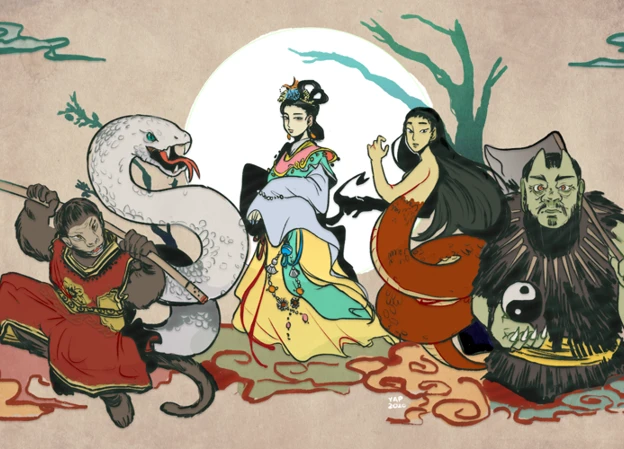Within the vast and diverse realm of Chinese folklore, an intriguing tapestry of mythological creatures and beasts exists, captivating the imagination with their unique stories and characteristics. These mythical beings, steeped in centuries of legend and lore, hold a prominent place in Chinese culture, embodying both awe and wonder. From the majestic dragons that soar through the heavens to the enigmatic phoenixes that symbolize rebirth and renewal, the rich tapestry of Chinese folklore is brimming with fascinating creatures waiting to be discovered. In this article, we embark on a journey through the realms of Chinese mythology to explore the captivating tales and attributes of these legendary beings. So, let us delve into the remarkable world of Chinese mythological beasts and uncover the secrets they hold.
Dragons
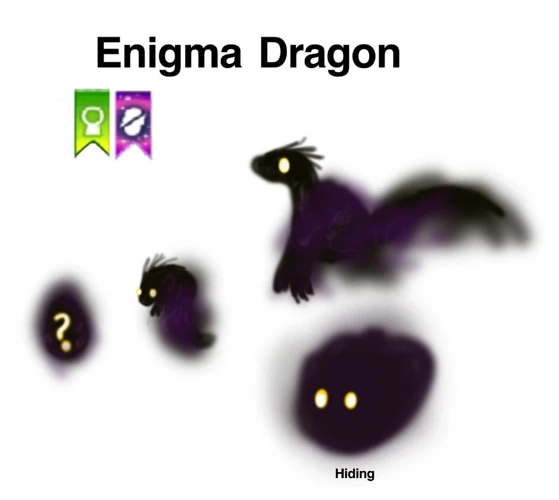
Dragons, the iconic creatures of Chinese folklore, hold a profound fascination in the imagination of both locals and people around the world. These majestic beings are revered as symbols of power, strength, and good fortune. The Celestial Dragon, known as Tianlong, is believed to reside in the heavens, controlling the wind and rain. With its serpentine body, it exudes a sense of grandeur and divine presence. On the other hand, The Earth Dragon or Dilong is associated with the underworld and subterranean realms, guarding hidden treasures and caverns. The Chinese mythos extends to The Dragon Kings, four magnificent beings ruling the seas and waters. Li, the Dragon King of the East Sea, is an esteemed figure in Chinese folklore, commanding authority and bringing blessings to those who respect his domain. These dragons, in all their varied forms and mythical prowess, have left an indelible mark on Chinese culture and continue to captivate the imaginations of generations to come. For more on Chinese mythical creatures and their symbolism, check out this article.
1. The Celestial Dragon
The Celestial Dragon, also known as Tianlong in Chinese mythology, is a fascinating entity that holds immense significance. This dragon is believed to dwell in the celestial realm, soaring gracefully through the skies. Its serpentine body, adorned with vibrant scales, represents the embodiment of power and divine authority. The Celestial Dragon is revered as a symbol of good fortune and cosmic balance. In Chinese culture, it is associated with the elements of wind and rain, believed to guide and control natural phenomena. Legends depict this celestial creature as a benevolent force, bringing auspicious blessings to those who are worthy. The Celestial Dragon’s celestial abode reflects its elevated status as a revered creature of the heavens. Its remarkable presence ignites the imagination and instills a sense of wonder in those who hear its tales. To explore more captivating legends from Chinese mythology, you can read about the Monkey King, one of the most beloved mythical characters in Chinese folklore.
2. The Earth Dragon
The Earth Dragon, known as Dilong in Chinese mythology, is a fascinating creature deeply rooted in the realms below the surface. This mighty dragon is believed to dwell in the earth, traversing through its intricate network of tunnels and caverns. With its powerful presence, the Earth Dragon is often associated with the abundance and fertility of the land. According to legend, these magnificent creatures guard precious treasures, including vast underground reserves of minerals and gems.
Depicted with a serpentine body and scales reminiscent of ancient artifacts, the Earth Dragon exudes a sense of ancient wisdom and strength. It is believed that the dragon’s movements within the earth can shape the flow of water and influence the occurrences of earthquakes.
In Chinese culture, the Earth Dragon is regarded as a symbol of stability and harmony between heaven and earth. Its association with the ground further emphasizes its grounding and nurturing qualities, representing the cyclical nature of life and the connection between humans and the natural world.
One of the most intriguing connections to the Earth Dragon in Chinese mythology is its association with the Terracotta Army of Qin Shi Huang, the first Emperor of China. The army, consisting of thousands of life-sized clay soldiers, was created to accompany the emperor in the afterlife and protect him. The presence of the Earth Dragon represents the belief that these mystical creatures were guardians of the emperor’s tomb, watching over and protecting him in his eternal rest. To learn more about the Terracotta Army and its connection to mythical warriors, check out this article.
3. The Dragon Kings
In Chinese mythology, The Dragon Kings reign supreme over the waters and seas, commanding respect and awe. There are four Dragon Kings, each representing a cardinal direction and presiding over their respective domain. First, we have the esteemed Ao Guang, The Dragon King of the East Sea. He is revered as a wise and benevolent ruler, known for his ability to control the tides and protect seafarers. Next, we encounter Ao Qin, The Dragon King of the South Sea. He is associated with fertility and abundance, ensuring bountiful harvests for the coastal regions. Moving westward, we come across Ao Run, The Dragon King of the West Sea. He is often depicted with a fierce demeanor, symbolizing power and authority. Lastly, we encounter Ao Shun, The Dragon King of the North Sea. He holds dominion over the icy northern realms and is associated with winter and the cold. Each Dragon King possesses unique qualities and attributes, yet they all embody the majesty and awe-inspiring nature of dragons in Chinese folklore. Their presence serves as a reminder of the vastness and power of the seas, as well as their significance in the lives of those whose livelihoods depend on them. The tales of the Dragon Kings continue to capture the imagination of many, highlighting their role in Chinese mythology and the enduring fascination with these legendary creatures.
Phoenixes

Phoenixes, with their resplendent plumage and undeniable grace, are revered as symbols of rebirth and eternal life in Chinese mythology. The Feng Huang, often referred to as the Chinese Phoenix, is a mystical creature believed to bring harmony and prosperity wherever it appears. With its vibrant colors and regal presence, it is regarded as the epitome of beauty and grace. Another prominent phoenix in Chinese folklore is The Vermilion Bird, also known as Zhu Que. This mythical creature is associated with the south and embodies passion, desire, and transformation. Lastly, The Sacred Phoenix is a creature revered for its connection to the sun and its ability to rise from the ashes, symbolizing resilience and renewal. The mythology surrounding phoenixes in Chinese culture is a testament to the enduring fascination with these magnificent creatures and their profound symbolism. For a deeper exploration of Chinese mythology, including the mythical warriors of the Terracotta Army and the legendary Monkey King, visit this article.
1. The Feng Huang
The Feng Huang, often referred to as the Chinese Phoenix, is a mythical creature steeped in ancient Chinese folklore. It is not just a symbol of beauty and grace but also represents virtue, prosperity, and good fortune. The Feng Huang is believed to have the power to bring harmony and balance wherever it goes. With its vibrant plumage adorned in stunning colors of red, yellow, blue, and green, it is a mesmerizing sight to behold. According to legend, the Feng Huang appears during times of peace and prosperity, and its absence signifies the onset of chaos and turmoil. In Chinese mythology, it is often depicted perched atop a tree or flying gracefully through the heavens. The Feng Huang’s significance extends beyond its physical form, as it is considered a divine being associated with the Empress and represents feminine strength and leadership. Its presence is often associated with key moments in Chinese history, symbolizing auspicious events and new beginnings. The Feng Huang’s symbolism can be found in various aspects of Chinese culture, from art and literature to architecture and fashion. Its majestic presence continues to inspire and captivate, making the Feng Huang a beloved and enduring emblem of Chinese mythology. For more on mythical creatures in Chinese folklore, you can explore this article.
2. The Vermilion Bird
The Vermilion Bird, also known as Zhu Que or Feng Huang, is a legendary creature that holds great significance in Chinese mythology. This magnificent bird, with its vibrant crimson plumage, represents beauty, rebirth, and good fortune. The Vermilion Bird is one of the Four Celestial Creatures, along with the Azure Dragon, the White Tiger, and the Black Tortoise. It is associated with the south and the element of fire in Chinese cosmology. In ancient Chinese legends, the Vermilion Bird is often depicted perched on a tree, emitting a melodious and enchanting song. This bird embodies the essence of elegance and grace. Its feathers are believed to possess magical properties, and according to some accounts, they have the power to heal wounds and cure illnesses. The Vermilion Bird is also considered a symbol of love and fidelity, and it is often associated with the mythical tale of Nüwa and Fuxi, the god and goddess who are said to have created humanity. This majestic creature continues to be a source of inspiration in Chinese art, literature, and culture, leaving a lasting impression on those who encounter its mythical presence.
3. The Sacred Phoenix
The Sacred Phoenix, also known as Fenghuang, is a mystical creature deeply rooted in Chinese folklore and symbolism. As the pinnacle of feminine virtue, grace, and beauty, it is considered the queen of all birds. The Fenghuang represents the yin energy, complementing the yang energy of the dragon, and together they symbolize the perfect balance of cosmic forces. This legendary bird is often depicted with the head of a pheasant, the body of a swan, the tail of a peacock, and the wings of a crane. Its feathers shimmer with resplendent colors, embodying the vibrant essence of life and renewal. With its melodious song, the Sacred Phoenix brings harmony and auspiciousness to those who hear it. In Chinese mythology, the Fenghuang is associated with fire, representing the transformative power of destruction and rebirth. It is believed that this mystical creature appears only during times of peace and prosperity, serving as a guardian of order and peace. The Sacred Phoenix holds immense cultural significance and continues to be revered as a symbol of eternal love, high virtue, and auspicious blessings in Chinese society.
Qilin
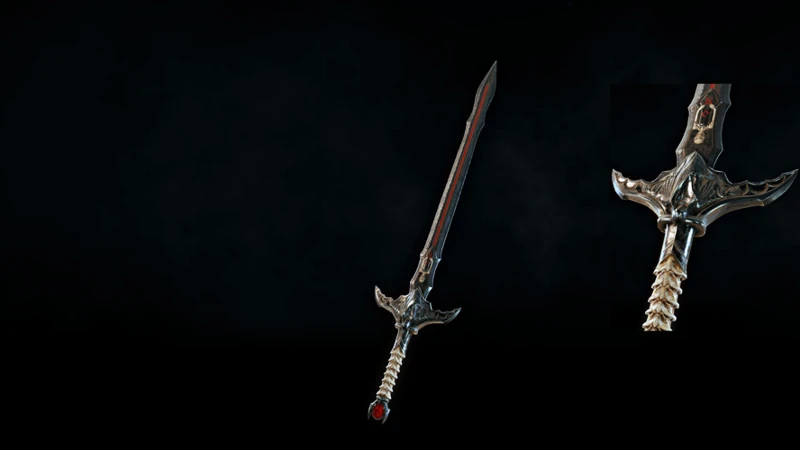
Qilin, also known as the Chinese unicorn, is a mythical creature that holds a significant role in Chinese folklore. It is revered as an Auspicious Beast and is considered a harbinger of good fortune and prosperity. Qilin is often depicted as a unique combination of various animals, possessing the body of a deer, the tail of an ox, and the hooves of a horse. With its majestic appearance and benevolent nature, Qilin is believed to bring harmony and luck to those it encounters. Known as the Guardian of Goodness, Qilin is associated with righteousness and justice, punishing the wicked while offering protection to the virtuous. Its presence is seen as a sign of divine favor and is highly revered in Chinese culture. The symbolism behind the Qilin and its association with positive qualities have made it a beloved mythical creature in Chinese folklore.
1. The Auspicious Beast
One of the most revered mythical creatures in Chinese folklore is The Auspicious Beast. This creature, also known as Qilin, is often depicted as a combination of various animals, such as a deer, lion, ox, and fish. Qilin is believed to bring prosperity, good fortune, and serenity wherever it appears. Its elegant and graceful appearance has made it a popular motif in Chinese art and architecture throughout history. The Qilin is known for its gentle nature and is considered a symbol of benevolence and righteousness. Legends surrounding the Qilin describe it as a creature that only appears during times of peace and harmony, making it a powerful symbol of a prosperous and just society. It is said that the Qilin can detect the true character and intentions of individuals it encounters, rewarding the virtuous and punishing the wicked. Its appearance is often associated with significant events, such as the birth or coronation of a wise and just ruler. The Qilin’s representation in Chinese culture exemplifies the deep-rooted beliefs and values that have shaped the nation’s history and societal norms for centuries.
2. The Guardian of Goodness
In Chinese folklore, the Qilin takes on the role of The Guardian of Goodness. With its majestic appearance resembling a fusion of different animals, including a deer, ox, and lion, the Qilin is a symbol of virtue, kindness, and righteousness. Believed to possess magical powers, this mythical creature is associated with bringing prosperity and warding off evil spirits. Legends tell of the Qilin appearing during times of great moral significance or the birth of noble rulers. Its presence is seen as a divine blessing and a sign of benevolence. The Qilin’s gentle nature reflects its role in safeguarding goodness and protecting the innocent. It is often depicted as a benevolent companion to deities and emperors, showcasing its noble qualities and protective nature. As a symbol of righteousness, the Qilin has inspired moral values and ethical conduct throughout Chinese history. Its image can be found in various art forms, such as sculptures, paintings, and even on traditional clothing. The Qilin’s presence in Chinese mythology serves as a reminder of the importance of goodness and the pursuit of virtuous actions.
Xiezhi
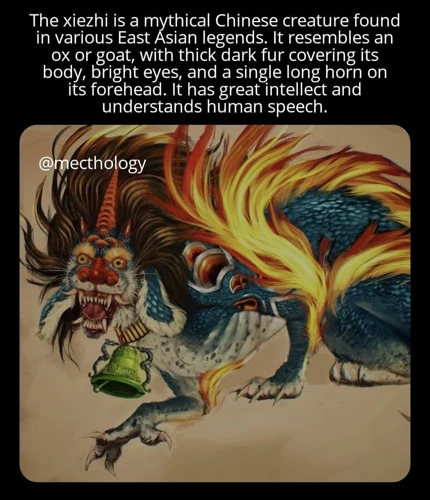
Xiezhi, a fascinating creature of Chinese folklore, is renowned for its association with justice and truth. As the Auspicious Beast, Xiezhi is often depicted as a mystical creature resembling a unicorn or qilin, with a single horn on its head. It possesses a unique ability to distinguish between innocence and guilt by means of touch. When brought before Xiezhi, the accused would have their hearts exposed, and if found guilty, the creature would devour them, delivering divine justice. Serving as the Guardian of Goodness, Xiezhi is revered for its unwavering devotion to upholding righteousness and ensuring moral fairness. Its presence in Chinese mythology serves as a reminder of the importance of virtuous conduct and the consequences that await those who stray from the path of righteousness.
1. The Divine Judge
The Divine Judge, known as Xiezhi, is a fascinating creature within Chinese folklore. This mythical beast is revered as the arbiter of justice, possessing a unique ability that sets it apart from other legendary creatures. Xiezhi is depicted as a fierce and majestic creature, resembling a strong and noble beast with the body of a lion and the tail of an ox. It is believed that Xiezhi possesses the remarkable power to distinguish truth from falsehood. When confronted with a dispute or accusation, this mystical creature will inspect the parties involved and, with a single bite, pronounce judgment. If the accused is guilty, Xiezhi will devour them, ensuring justice is served. However, if the accused is innocent, the beast will pass them unharmed. The legend of the Divine Judge serves as a reminder of the importance of fairness and integrity in society, instilling a sense of awe and reverence for this mythical creature. Its presence in Chinese folklore exemplifies the profound value placed on justice and the pursuit of truth. Whether feared or admired, Xiezhi remains an enigmatic and captivating figure, embodying the essence of justice within the realms of Chinese mythology.
2. The Symbol of Justice
In Chinese folklore, The Xiezhi serves as the symbol of justice and is revered for its ability to detect lies and act as a divine judge. This mythical creature takes the form of a legendary beast with the body of a lion and the horns of a unicorn. Xiezhi is believed to possess an exceptional knowledge of right and wrong, making it an emblem of righteousness and moral integrity. Its main role is to assist in legal proceedings, using its extraordinary powers to determine the guilt or innocence of individuals. It has the remarkable ability to distinguish truth from falsehood by butting its horn against the chest of the accused. If the person is innocent, the horn remains stationary, but if they are guilty, the horn pierces through their chest as a sign of their guilt. This depiction of the Xiezhi portrays its unwavering commitment to upholding justice and maintaining order within society. Its legend has not only left a remarkable imprint within Chinese folklore but also serves as a reminder of the importance of fairness and honesty in the pursuit of justice.
Zhu Bajie
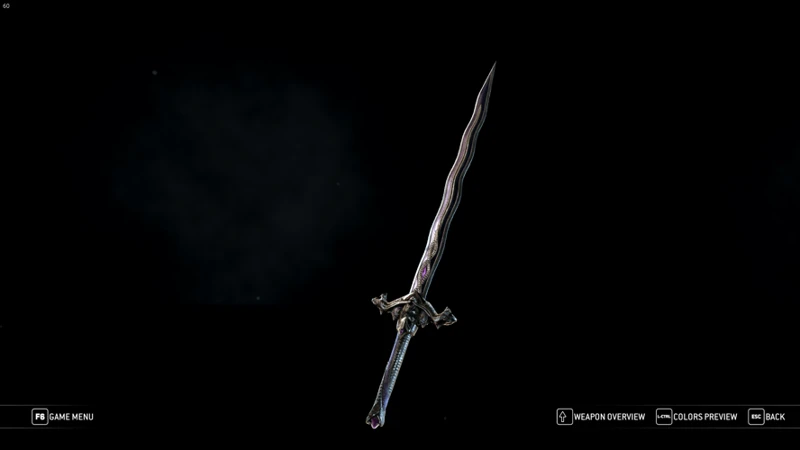
Zhu Bajie, also known as the Pig Monster, is a fascinating character from Chinese folklore. As one of the main characters in the classic novel “Journey to the West,” Zhu Bajie accompanies the legendary Monkey King on their epic adventures. This mischievous companion possesses the face of a human and the body of a pig, making him a unique and memorable figure. The Pig Monster is known for his love of food and indulgence, sometimes leading him astray from the path of righteousness. However, beneath his gluttonous exterior, Zhu Bajie also demonstrates loyalty, bravery, and occasional acts of heroism. With his distinctive appearance and complex personality, Zhu Bajie adds depth and humor to the narrative of “Journey to the West.” To learn more about other mythical characters from this renowned tale, be sure to read about the Monkey King and the mythical warriors of the Terracotta Army.
1. The Pig Monster
In Chinese folklore, The Pig Monster is a fascinating and distinctive creature that combines human and animal characteristics in a mischievous and comical way. Also known as Zhu Bajie, this mythical being is depicted as a humanoid figure with the head of a pig. Zhu Bajie was originally a heavenly marshal who fell from grace due to his gluttony and desire for earthly pleasures. Despite his flaws, Zhu Bajie is often portrayed as a lovable and humorous character, adding a lighter touch to the mythological tales. His gluttonous nature and insatiable appetite often lead to amusing situations and adventures. However, beneath his playful exterior, Zhu Bajie possesses great strength and martial skills, wielding a formidable rake as his weapon of choice. With his unique appearance and endearing personality, The Pig Monster is a captivating figure in Chinese folklore, leaving a lasting impression on those who encounter his stories. For more on Chinese mythology, you can explore the legend of the Monkey King or learn about the awe-inspiring Terracotta Army warriors.
2. The Mischievous Companion
The Zhu Bajie, also known as the Mischievous Companion, is a beloved character in Chinese folklore. This creature is depicted as a half-human, half-pig monster with an insatiable appetite. Despite his whimsical appearance, the Zhu Bajie possesses incredible strength and fighting skills, making him a formidable companion on epic journeys. However, his mischievous nature often leads him astray, and he can be easily distracted by earthly pleasures, causing trouble for his comrades. The Zhu Bajie’s presence brings a lightheartedness to tales of adventure, injecting humor and unpredictability into the narrative. His character reminds us that even in the midst of serious quests, it is essential to maintain a sense of joy and mischief. The Zhu Bajie serves as a reminder of the multifaceted nature of heroism, that even the most unlikely of companions can contribute great value to a team. Through his exploits and antics, this delightful creature has become an endearing figure in Chinese mythology, captivating audiences with his charm and creating an eternal place for himself in the hearts of those who encounter his tales.
Jiangshi
Jiangshi, commonly referred to as “hopping vampires,” are unique and eerie creatures from Chinese folklore. These reanimated corpses are said to hop rather than walk, due to rigor mortis affecting their joints. The Hopping Vampire is often depicted wearing tattered garments and sporting long, unkempt hair, while their faces bear a pale and ghostly complexion. Legends speak of these restless spirits being brought to life through supernatural means, such as the influence of powerful magic or the failure to properly bury the deceased. Jiangshi are thought to be driven by a relentless hunger for life force, resembling that of a vampire. Though fearsome in appearance, these creatures can be repelled or controlled through various means, such as placing a piece of yellow paper with sacred inscriptions on their foreheads. Jiangshi continue to captivate the imaginations of those who delve into the chilling depths of Chinese folklore, offering a unique perspective on the realm of the undead. If you’re interested in other mythical creatures from Chinese folklore, be sure to read about the Monkey King or the Terracotta Army’s mythical warriors.
1. The Hopping Vampire
The Hopping Vampire, also known as Jiangshi, is a fascinating creature deeply rooted in Chinese folklore. This restless spirit is believed to rise from the dead, bounding and hopping its way through the night. Jiangshi is characterized by its stiff demeanor, as if frozen in rigor mortis, and its arms stretched out in front. Its distinctive hop is said to be a result of its stiff joints, unable to move in a smooth gait. These creatures are often depicted with long white hair, yellowed paper talismans adorning their bodies, and their eyes fixated in a haunting stare. Jiangshi are believed to hunt for the life force or essence, known as qi, of the living to sustain themselves. To ward off these hopping vampires, it is customary to affix charms or protective talismans on doors and windows and to sprinkle sticky rice in graveyards, as it is believed that the Jiangshi are compelled to count the grains before continuing their pursuit. The tales of the Hopping Vampires have captured the imagination of many and continue to be a prominent part of Chinese folklore and popular culture.
2. The Restless Spirit
The Restless Spirit is a fascinating creature that finds its origins in Chinese folklore. This restless entity, known as Jiangshi, is often depicted as a hopping vampire, bringing a sense of trepidation and intrigue to Chinese mythology. Picture a zombie-like figure, with arms stretched forward and a stiff, jerky movement as it hops from one place to another. The Jiangshi is believed to be a reanimated corpse, brought to life by an evil spirit or due to improper burial rites. In Chinese culture, it is essential to honor the deceased and ensure that their spirits find peace. The Jiangshi serves as a reminder of the consequences that may arise when these rituals are neglected. They are said to feed on the life force, or “qi,” of the living, spreading an aura of fear and chaos. Often depicted with long white robes and a distinctive hat, the Jiangshi emits a ghostly presence. It is believed that these restless spirits can be appeased by traditional rituals and offerings, allowing them to find peace and rest at last. The restless nature of the Jiangshi adds an element of mystery and dread to Chinese folklore, captivating the imagination and reminding us of the importance of respecting the spirits and the natural order of life and death.
Conclusion
In conclusion, the world of Chinese mythology is a treasure trove of captivating and fantastical creatures. From the awe-inspiring dragons and phoenixes to the enigmatic qilin and xiezhi, these mythical beings have captured the imaginations of people for centuries. Each creature holds its own significance and symbolism within Chinese culture, representing various traits and virtues. Whether it be the power and wisdom embodied by dragons, the rebirth and renewal represented by phoenixes, or the auspiciousness and benevolence attributed to qilin, these mythological beasts serve as reminders of the rich cultural heritage of China. From the celestial realms to the earthly planes, these creatures have permeated every aspect of Chinese society, from art and literature to festivals and celebrations. As we delve deeper into the world of Chinese folklore, we are transported to a realm where imagination knows no bounds. So, take a moment to appreciate the beauty and wonder of these mythological beings, as they continue to inspire and captivate us with their enduring tales.
Frequently Asked Questions
1. Are dragons considered good or evil in Chinese mythology?
In Chinese mythology, dragons are generally seen as benevolent and powerful creatures associated with wisdom, prosperity, and good fortune. They are revered as symbols of imperial power and bringers of blessings.
2. What is the significance of the Dragon Kings?
The Dragon Kings, also known as Longwang, hold great significance in Chinese mythology. They are believed to govern the four seas and control the weather, bringing rain and ensuring a bountiful harvest. People often pray to them for protection and favorable conditions.
3. What role do phoenixes play in Chinese folklore?
Phoenixes, also known as Fenghuang, are mythical birds associated with resurrection, rebirth, and immortality. They symbolize beauty, grace, and harmony, and are often depicted as a pair representing yin and yang.
4. Is the Qilin a benevolent creature?
Yes, the Qilin is considered a benevolent creature in Chinese mythology. It is believed to bring blessings, good luck, and peaceful times. The Qilin is often regarded as a gentle protector of the innocent and guardian of goodness.
5. What is the Xiezhi known for?
Xiezhi is known as the divine judge in Chinese mythology. It possesses a unique ability to distinguish between innocent and guilty parties. It is often depicted as a fierce mythical creature with the body of a lion and the head of a unicorn.
6. Who is Zhu Bajie in Chinese folklore?
Zhu Bajie, also known as the Pig Monster, is a character from the Chinese epic, “Journey to the West.” He is a mischievous and humorous companion who possesses the powers of transformation. Despite his flaws, he is a lovable character and provides comic relief in the story.
7. What are Jiangshi?
Jiangshi are a type of Chinese hopping vampire or zombie. They are believed to be reanimated corpses with stiff limbs that hop around in search of life force, typically at night. They are often depicted as scary and restless spirits.
8. Are there any real myths or legends about dragons in China?
While dragons are mythical creatures, they hold great cultural significance in China. In fact, there are various myths and legends surrounding dragons, including tales of dragon gods, dragon competitions, and dragon pearls, which add to the mystique and wonder of these creatures.
9. How are phoenixes connected to the cycle of life and death?
Phoenixes are believed to cyclically burst into flames and be reborn from their ashes, symbolizing the perpetual cycle of life, death, and rebirth. They are seen as a powerful representation of transformation and renewal.
10. Can dragons communicate with humans?
In Chinese mythology, dragons possess the ability to communicate with humans. They are often depicted as wise and knowledgeable beings who can impart wisdom, grant wishes, and offer guidance to those who seek their counsel.

